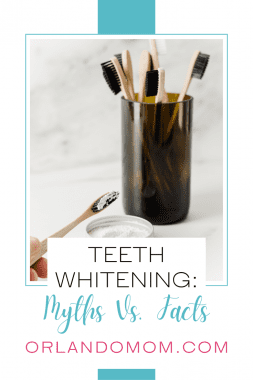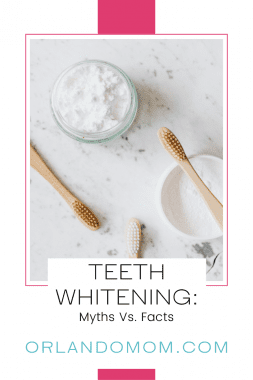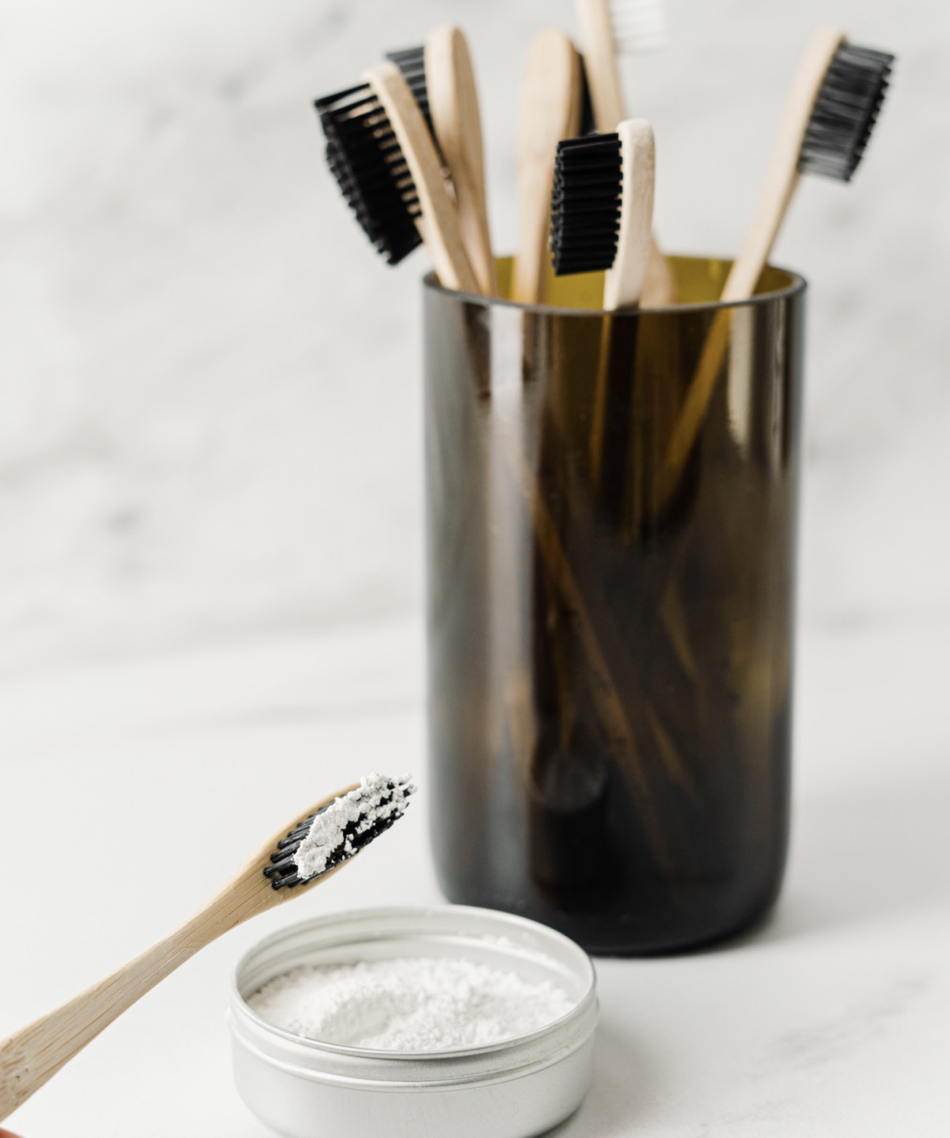As we age, our teeth naturally begin to dull. Certain substances, like soda and coffee, can speed up the staining process. Teeth whitening can restore teeth and improve your overall smile. From in-office dental cleanings to DIY teeth whitening solutions, various methods claim to work best. Here are a few of the most common teeth whitening myths and facts.

Myth: Fruits (like lemons and strawberries), oil pulling, and baking soda are safe and effective ways to whiten teeth.
- Using crushed strawberries and lemon juice for whitening can cause eventual damage to the enamel/gum discomfort, and possibly require dental work in the future.
- Although using coconut oil to whiten teeth seems efficient, there is no scientific evidence that oil pulling effectively brightens your smile.
- Using baking soda for teeth whitening may throw off the balance of your mouth’s bacterias and lead to oral health problems.
Fact: Teeth have pores that open and close.
As strange as it sounds, our teeth have pores, similar to the pores in our skin. Our teeth become stained when substances (i.e. coffee, tea, wine, candy, etc.) are absorbed into our pores. To remove the stains, you should consider getting your teeth professionally whitened as they have the necessary tools and training.
Myth: Teeth whitening lasts forever.
While certain teeth whitening methods can be very effective, none of them will keep your teeth shining white forever. Keeping your new pearly smile after getting your teeth whitened requires upkeep and carefulness when it comes to what you consume. All teeth whitening does is remove current stains, but it is your job to prevent more stains. Staying away from dark liquids and smoking will allow your teeth to remain lighter and brighter for longer. Teeth whitening should be used as a tool to improve your smile, rather than a procedure that eliminates all future teeth stains. You should consult your dentist to determine how often you should whiten your teeth and how to maintain results.
Fact: Teeth whitening does not damage tooth enamel.
Enamel is considered to be one of the strongest tissue types of the human body. Although enamel is tissue outside of our teeth, stains get absorbed into the inner layers of our teeth, known as dentin. For teeth whitening gels to reach the dentin tissue, it travels through microscopic tubules in the enamel. Some experience sensitivity after getting their teeth whitened because the dilation of the tubules in the enamel leave teeth vulnerable, which is known as dehydration. After getting your teeth whitened it is important to avoid consuming hot or cold substances to avoid possible nerve irritation. Before trying anything new or considering teeth whitening at home, you should consult your dentist.
Myth: Whitening toothpastes are effective.
Your toothpaste at home may say that it’s whitening, but how much of a difference can toothpaste really make? While whitening toothpastes make it easier to brush away surface stains, they don’t do much more than that. Because most of our teeth stains are underneath the enamel, whitening toothpaste isn’t able to reach the stains. It takes a lot to whiten teeth, and whitening toothpaste does not have enough whitening agents to make a noticeable difference. For your teeth to get noticeably whiter, they need to be in contact with the whitening agents for at least 20 minutes. This means that the only way to see any effect from your toothpaste is to brush for 20 minutes multiple times a day.
Fact: Porcelain veneers and crowns discolor at an extremely slow rate.
If you have porcelain crowns or veneers, you may have noticed that they don’t stain at the same rate as your natural teeth. This is because dental grade porcelain is very effective at resisting stains. While thinking about teeth whitening, some opt to look into getting porcelain veneers instead, as the shiny white results will last much longer. The veneer process is more expensive and in depth than teeth whitening, but it is worth looking into if you are determined to keep a bright smile. Veneers last about 10-20 years before they begin to discolor, and that is about the same rate that they need to be replaced.





















